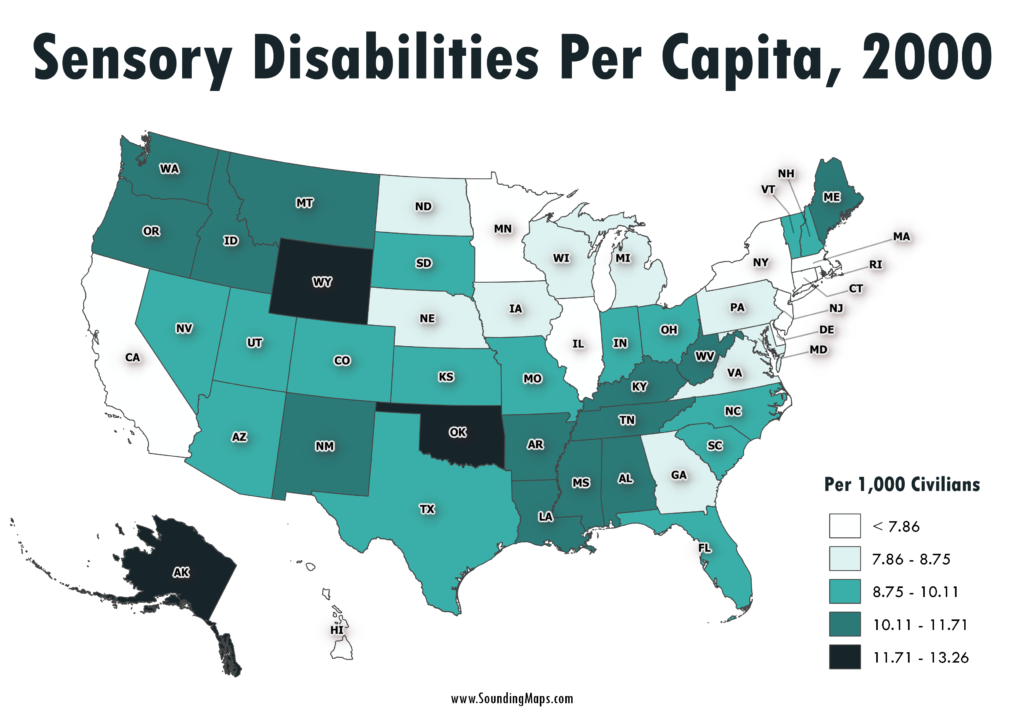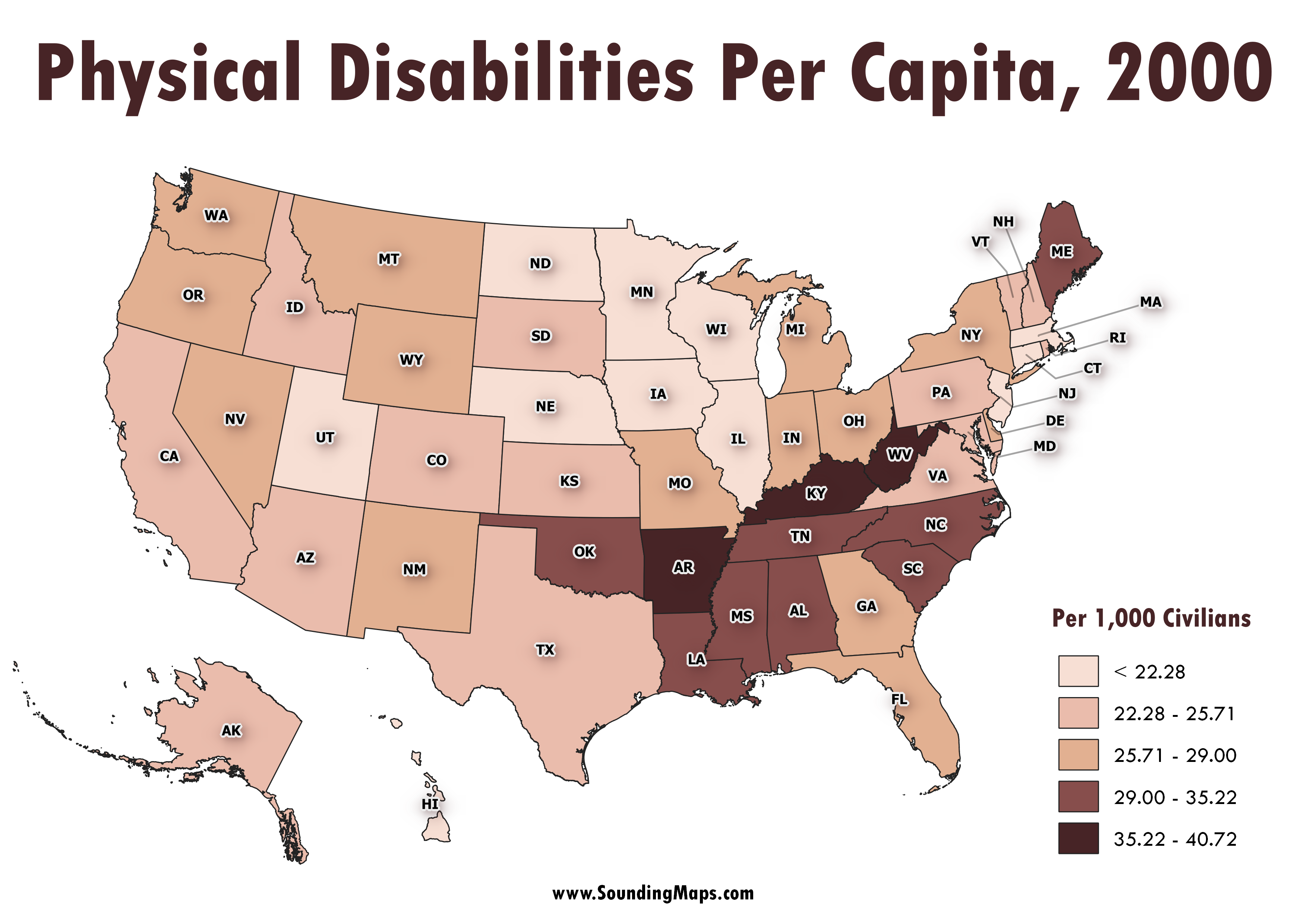
This map shows sensory disabilities throughout the United States in the year 2000. The color coded regions represent disabilities per 1,000 civilians. For instance, Alaska had 12.26 sensory disabilities per 1,000 citizens.
Census 2000 counted 49.7 million people with some type of long lasting condition or disability. They represented 19.3 percent of the 257.2 million people who were aged 5 and older in the civilian non-institutionalized population — or nearly one person in five. Within this population, Census 2000 found 9.3 million (3.6 percent) with a sensory disability involving sight or hearing.
Alaska suffers the most sensory disabilities per capita.
- Alaska – 12.26
- Oklahoma – 12.70
- Wyoming – 12.15
- West Virginia – 11.71
- Kentucky – 11.57
You can also visit similar maps of Mental Disabilities and Physical Disabilities





One thought on “United States Sensory Disabilities Per Capita”
I wonder if the distribution of persons with sensory disabilities is evenly spread throughout the states, so per capita states with larger populations tend to have less.